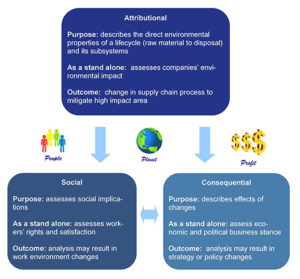Creating Transparency Through Lifecycle Assessments
In the second post of our blog series “The Dimensions of Doing Good”, we discussed the “Rise of the B Corp”: the birth of the Benefit Corporation as a legal entity, and how Certified B Corps are rising to meet the challenge of serving all stakeholders, not just fiscal shareholders. In this post, we will discuss one of the associated challenges by examining how companies can begin to achieve the level of transparency commonly desired by today’s stakeholders. A full Life Cycle Assessment (LCA) is a technique intended to provide an end-to-end analysis of product or service impacts. An LCA breaks down each supply chain function and creates a level a transparency to help the business understand the effects of their operations, revealing complexities throughout the system. It helps companies to scientifically assess impacts, define alternatives, and ensure longevity of their business. The Environmental Protection Agency and others emphasize LCA’s as a step towards promoting the “people” element of the triple bottom line; however, it is important to recognize its connection to “planet” and “profit” elements as well. Benefits of life-cycle assessment can include deeper analytics, maximized revenue, and improved brand image. So where does this link exist? Well, deeper analytics of your products or services can help to improve business strategy and R&D initiatives. This maximizes revenue because of product & process design improvements or other cost cutting opportunities identified. As a result, companies can connect people more directly with the impacts of their lifestyle through education and labeling, creating a culture more focused on sustainability. To achieve the mentioned business gains, 3 LCA techniques should be assessed in conjunction with one another:

Attributional assessments focus on mitigating high areas of environmental impact. The diagram above draws arrows from this area to Social and Consequential methods because any changes made within your supply chain as a result of environmental factors will have either social implications, financial implications, or both. Similarly, the double-headed arrow between Social and Consequential Assessments above demonstrates the link between the assessment outcome and other business implications. Though each of the Attributional, Social, and Consequential Assessment methods can be executed as stand-alone assessments, they are more powerful together because of these ties.


